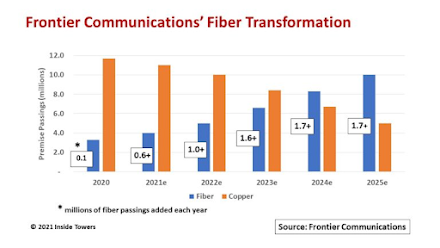The “hybrid” in “hybrid fiber coax” has been a key strategic approach used by the cable industry more generally. Fiber and coax; owned spectrum and mobile virtual network operator; MVNO and Wi-Fi offload; linear video and on-demand streaming; analog and digital; content ownership and distribution.
Keep in mind the "hybrid" business strategy often suggests itself at times of key technological change. Perhaps the classic example is the transition from sailing ships to steam-powered ships, when for 100 years many sailing ships were outfitted with steam boilers, but used both methods of propulsion.
The key point is that any hybrid still represents a transition strategy "from something to something else."
Now hybrid looks to happen for next-generation access networks. Cox Communications, joining others such as Comcast, says it will deploy fiber to the home and DOCSIS 4.0 networks using HFC.
Though Cox has given few details, the network aims to supply 10 Gbps. Cox does not say whether that is symmetrical or not. DOCSIS 4.0 will feature upstream speeds to 6 Gbps, as the standard calls for. FTTH is almost certainly going to be symmetrical.
In a first, Virgin Media O2 plans to operate its gigabit hybrid fiber coax network side by side with the coming fiber to home network. That has never been done before at scale, if ever, by a cable TV company.
The best analogy is the way mobile network operators run several generations of mobile networks simultaneously, using discrete radios, spectrum and often towers or radio sites. When telcos deploy optical fiber, they decommission the copper access network.
That decision should have operating cost implications, positive and negative. On the positive side of the ledger, VMO2 will not have to migrate customers from the hybrid fiber coax network to the FTTH network in every case.
That will save truck roll costs, customer premises equipment costs and some amount of customer service work to explain and convince people to switch over.
On the negative side of the ledger, supporting two separate networks, with different underlying technologies, will not provide clear operating cost advantages. Energy costs for two networks will be necessary. Support staff will have to be trained to support both networks.
It is possible migration will not be necessary in a majority of cases, for some time. So we will have to wait and see how the operating cost advantages and disadvantages appear over time.
Take rates will be important. Though VMO2’s national FTTH network will not operate in parallel everywhere, it will do so in areas where the HFC network already operates, which might mean 15.6 million or so homes. Seven milliion homes will have FTTH only.
Cox and Comcast will operate two networks as well; just not two networks in the same area, as a rule. FTTH will undoubtedly be targeted to business-rich areas or higher-demographic suburban areas first, where the demand for multi-gigabit service is expected to develop first.

